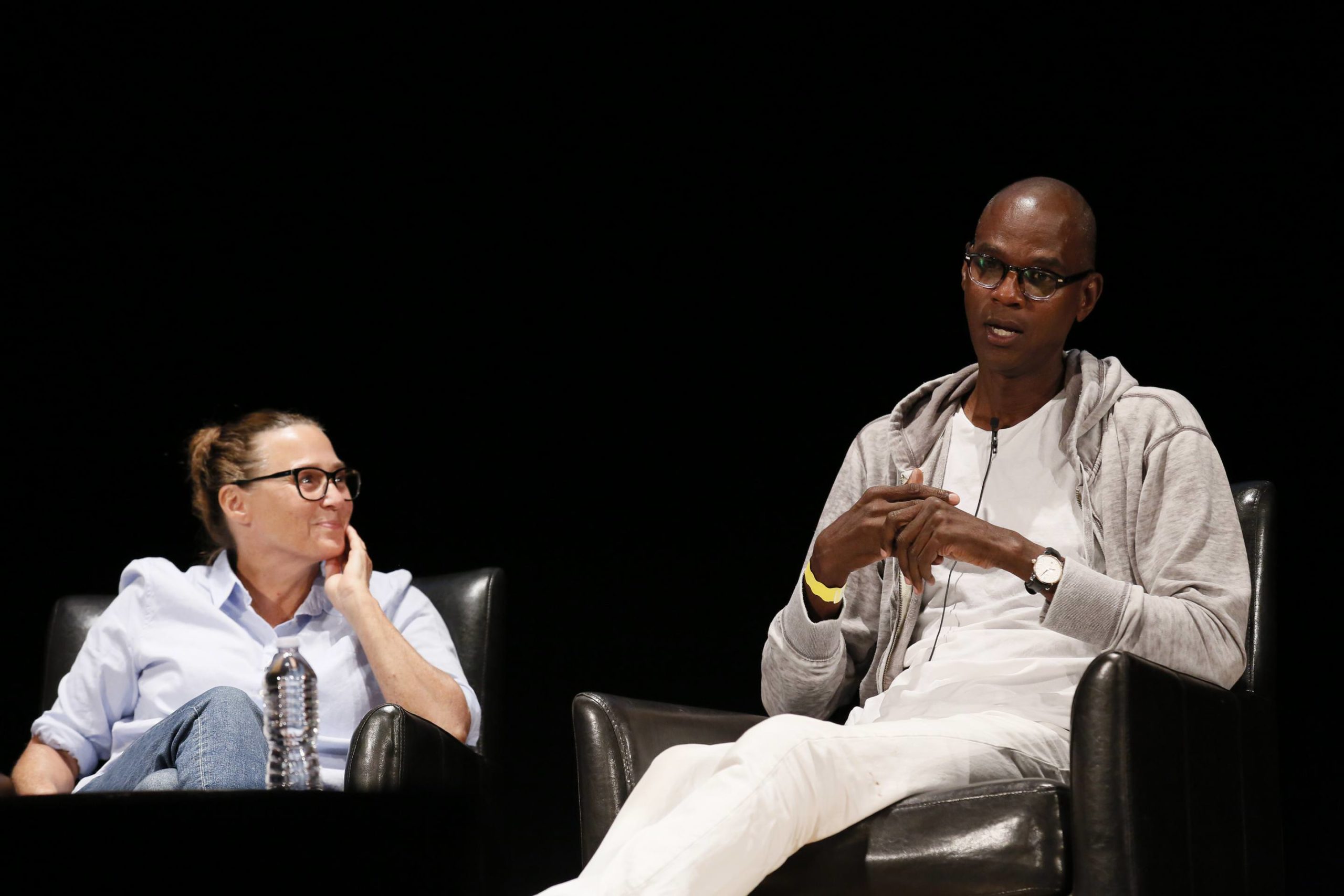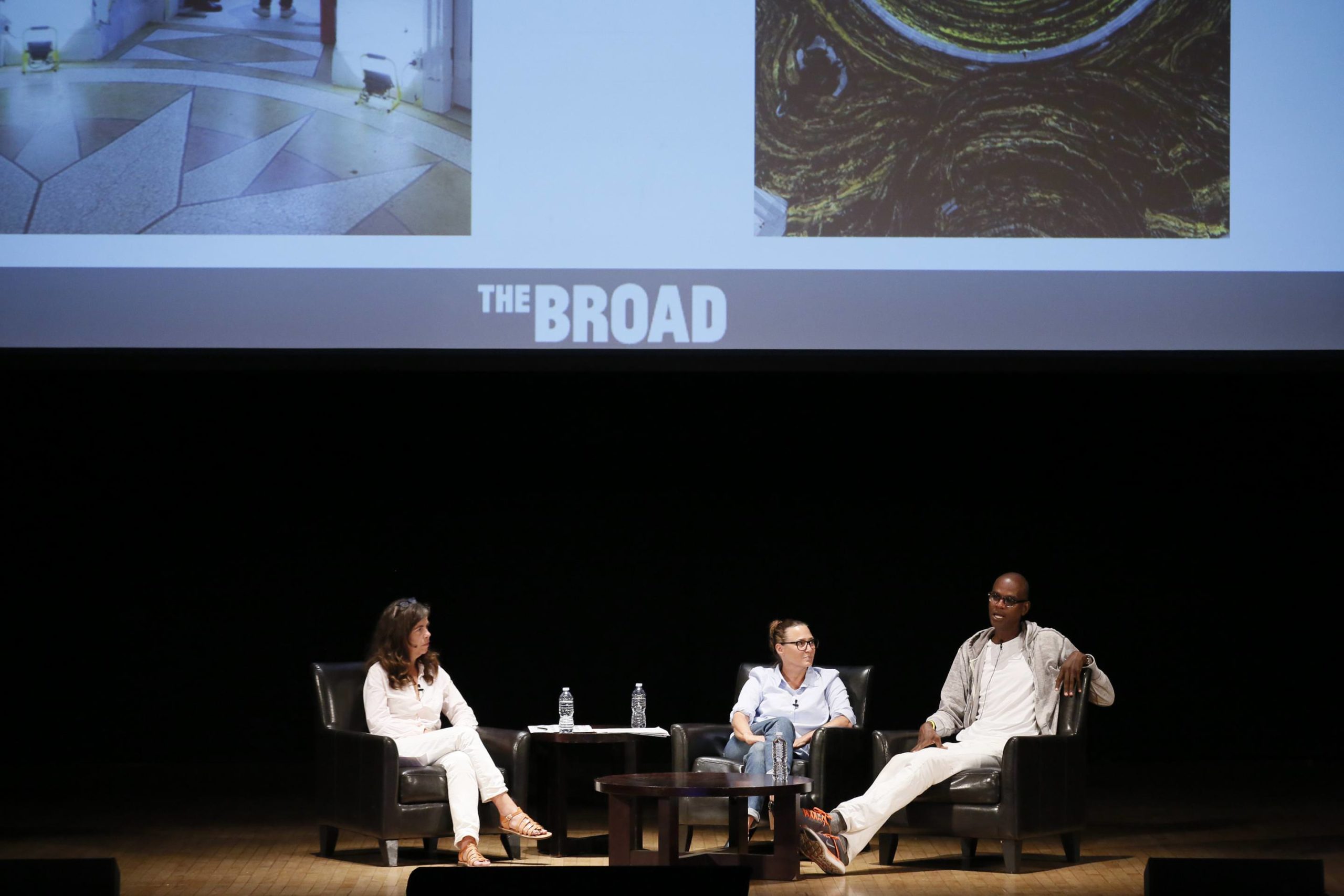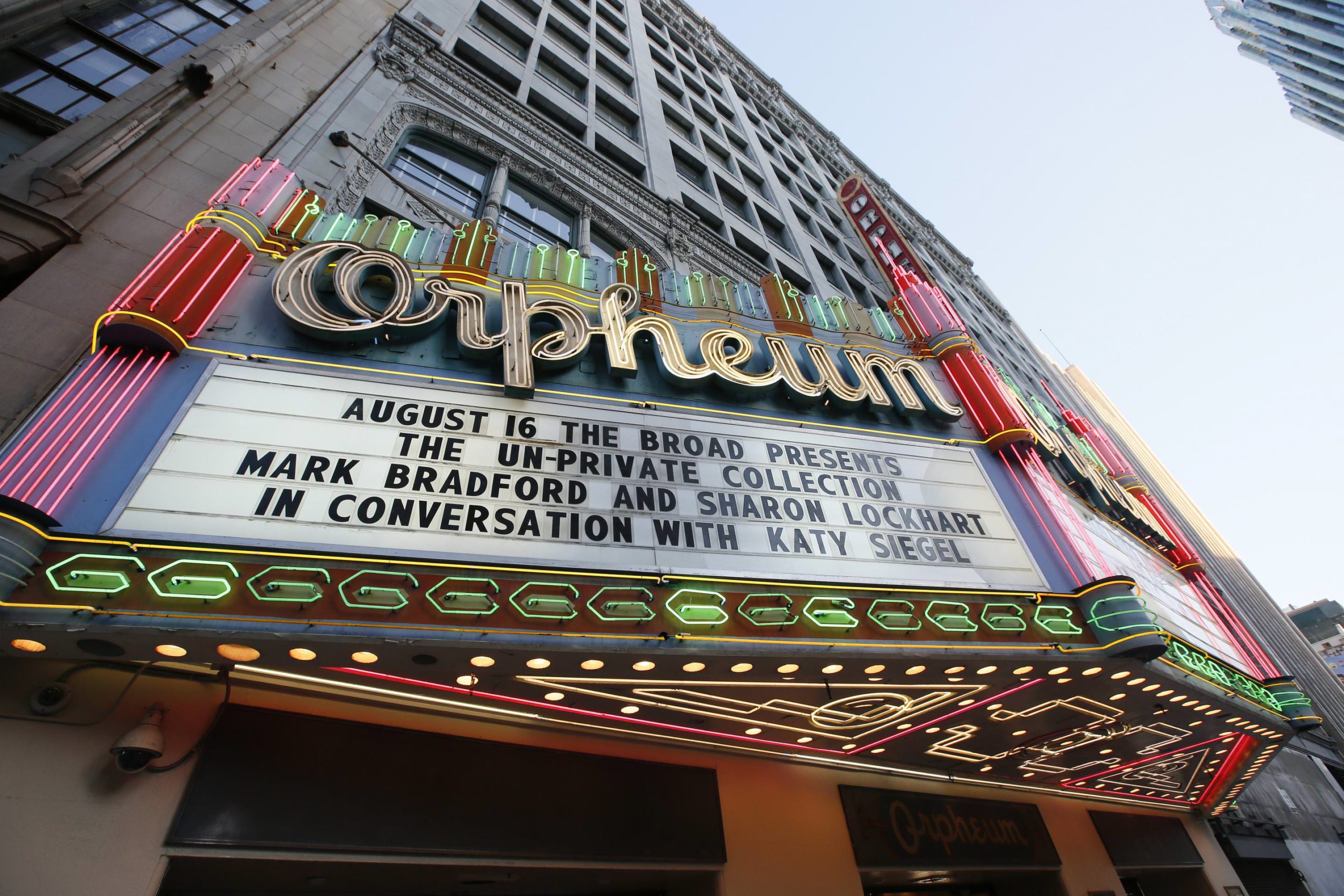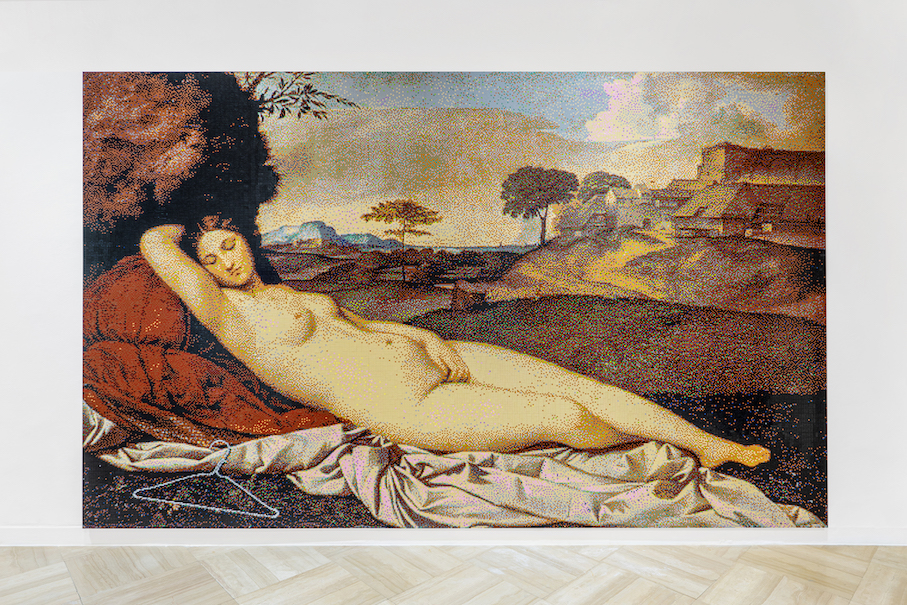Last Wednesday in Downtown Los Angeles, the artists Sharon Lockhart and Mark Bradford walked onto the stage of the Orpheum Theatre, settling in for a conversation on art and human reliance. Part of The Broad’s ongoing series “The Un-Private Collection,” Wednesday night’s tête-à-tête was moderated by the curator, critic, and historian Katy Siegel. There were some unfussy PowerPoint slides running in the background as the artists took turns presenting on their respective designs for this year’s Venice Biennale—Mark Bradford’s “Tomorrow is Another Day” is the United States’ submission, Sharon Lockhart’s “Little Review,” Poland’s.
Lockhart’s pavilion serves as a mouthpiece for human beings across space and time: those of Polish girls currently living in a group home in Rudzienko (they are Lockhart’s longtime collaborators and art subjects); the progressive Jewish-Polish educator Janusz Korczak (who died in the Holocaust); and a group of Polish youth living in Warsaw between the years of 1926 and 1939. Lockhart’s work is about recuperating the marginalized voice, especially one gendered female.
 Sharon Lockhart and Mark Bradford during The Un-Private Collection: Mark Bradford, Sharon Lockhart + Katy Siegel presented by The Broad Museum held at the Orpheum Theatre on Wednesday, March 16, 2017, in Los Angeles, California. (Photo by Ryan Miller / The Broad)
Sharon Lockhart and Mark Bradford during The Un-Private Collection: Mark Bradford, Sharon Lockhart + Katy Siegel presented by The Broad Museum held at the Orpheum Theatre on Wednesday, March 16, 2017, in Los Angeles, California. (Photo by Ryan Miller / The Broad)
While the international community confronts the violent legacy of nationalism, there’s a disastrous resurgence in its rhetoric. Artists will often use the bizarre organizing structure of the Venice Biennale and its nationalized pavilions as creative fodder. Mark Bradford is one of those. As a black, gay man living and working out of South Los Angeles, representing America under Trump’s administration is a seriously daunting task.
Bradford borrows the last line of Gone With the Wind for the title of his show, warping the Jeffersonian architecture of the US pavilion (another ‘neo-’ that wants to whitewash the violently biracial foundations of America) with mythological fury. The black experience is metonymically installed throughout the pavilion’s space: as a spoiled “foot,” pushing visitors to the periphery; the dreads of Medusa; as recycled endpapers from black-owned hair salons. The central rotunda conjures the deep despair of the Middle Passage and a whirlpool of rage, as well as the faraway oculus of possibility. It all culminates in a video of a black man sashaying down a street in South Los Angeles sometime in 2015.
 Katy Siegel, Sharon Lockhart and Mark Bradford during The Un-Private Collection: Mark Bradford, Sharon Lockhart + Katy Siegel presented by The Broad Museum held at the Orpheum Theatre on Wednesday, March 16, 2017, in Los Angeles, California. (Photo by Ryan Miller / The Broad)
Katy Siegel, Sharon Lockhart and Mark Bradford during The Un-Private Collection: Mark Bradford, Sharon Lockhart + Katy Siegel presented by The Broad Museum held at the Orpheum Theatre on Wednesday, March 16, 2017, in Los Angeles, California. (Photo by Ryan Miller / The Broad)
Bradford and Lockhart aren’t invested in the notion of the artist as a solo “genius.” Nor would they ever describe their art as “autonomous.” Such fetishistic approaches to talking about art repress its social underbelly. Nothing gets made in a vacuum, and everyone is interdependent. As Siegel reminded us throughout the evening, the finished artwork is only “the tip of the iceberg.” In tandem with his art praxis, Bradford founded Art+Practice in Leimert Park, a cultural center that provides services to foster youth in South Los Angeles. He’s also supporting Rio Terà dei Pensieri, a nonprofit that provides work placement and social re-integration to men and women from the Venice prison system. Lockhart continues to mentor and collaborate with youth from Poland.
Rather than getting caught up in the semantics of what art is or isn’t, Bradford and Lockhart were eager to discuss what it takes to “come back from ‘oops.’” Speaking for the two of them, Bradford added, “I think we can just remember what it was like to be super silenced and needing so much help, but not knowing how to ask about it.” Rather than retreat into the silos of their studio practices, insulated by art world notoriety, both Bradford and Lockhart continue to address the marginalized subject position. They radiate a self-sovereignty, which is arrived at by weathering the painful intervals between chapters of being seen and unseen. All this, in order to better companion the disillusion of others.
 Exterior during The Un-Private Collection: Mark Bradford, Sharon Lockhart + Katy Siegel presented by The Broad Museum held at the Orpheum Theatre on Wednesday, March 16, 2017, in Los Angeles, California. (Photo by Ryan Miller / The Broad)
Exterior during The Un-Private Collection: Mark Bradford, Sharon Lockhart + Katy Siegel presented by The Broad Museum held at the Orpheum Theatre on Wednesday, March 16, 2017, in Los Angeles, California. (Photo by Ryan Miller / The Broad)












